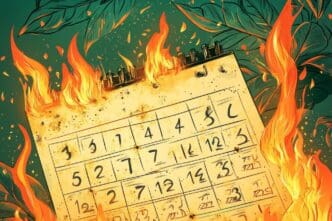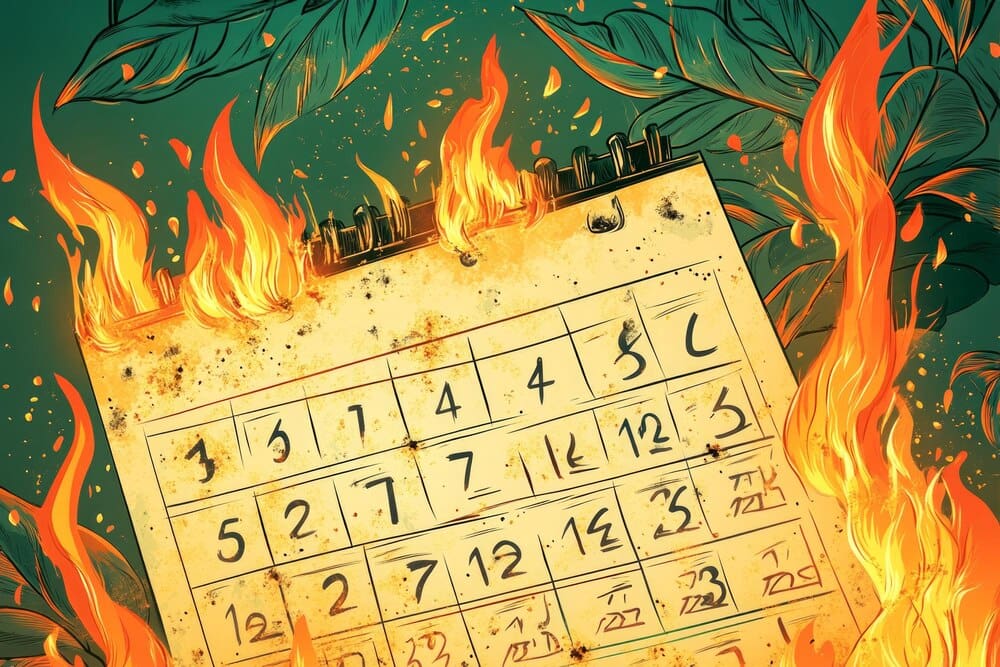For anyone dreaming of a life free from the traditional 9-to-5 grind, the concept of financial independence is the ultimate goal, and calculating your “FIRE number” is the critical first step in turning that dream into a concrete plan. This number represents the total amount of invested assets you need to accumulate to live off the returns indefinitely, allowing you to “Retire Early” (the RE in FIRE) or simply work on your own terms. Calculating this figure boils down to a simple but powerful formula: understanding your annual spending and multiplying it by 25, a principle derived from the widely-cited 4% safe withdrawal rate. This single calculation provides a tangible target, transforming the abstract idea of financial freedom into an achievable financial objective that you can actively work toward starting today.
What is FIRE and Why Does the Number Matter?
The FIRE movement—short for Financial Independence, Retire Early—is a lifestyle movement and financial strategy centered on extreme saving and investing. The core philosophy is to accumulate income-producing assets at a rapid pace, enabling individuals to stop working for money decades before the conventional retirement age.
At its heart, FIRE is about having options. Financial independence means your living expenses are fully covered by your investment income. Whether you choose to actually retire, travel the world, start a passion project, or work a lower-stress job is entirely up to you. The “Retire Early” part is often the headline, but the “Financial Independence” is the true prize.
Your FIRE number is the linchpin of this entire strategy. Without a specific target, saving and investing can feel directionless. By calculating your number, you create a finish line. It tells you exactly how much capital you need to achieve escape velocity from mandatory work, making your financial goals measurable, motivating, and, most importantly, manageable.
The Core Calculation: Your Annual Expenses and the 4% Rule
The most common method for calculating a FIRE number is built on a cornerstone of retirement research known as the “Trinity Study.” This study, and subsequent research, found that a retiree could safely withdraw 4% of their initial portfolio value each year, adjusting for inflation, with a very high probability of the money lasting for at least 30 years. The FIRE community has adopted this as the “4% Safe Withdrawal Rate” (SWR).
The math to find your FIRE number using this rule is straightforward. If you can live off 4% of your portfolio, then your total portfolio needs to be 25 times your annual expenses (100% / 4% = 25). This gives us the fundamental formula.
FIRE Number = Annual Expenses x 25
Step 1: Calculate Your True Annual Expenses
This is the most critical and often most difficult part of the equation. Your FIRE number is only as accurate as your expense tracking. A rough estimate can lead you to save too little, putting your early retirement at risk, or save too much, costing you years of unnecessary work.
To begin, you must meticulously track your spending for several months, if not a full year, to get a realistic average. Your goal is to determine what your expenses would be in retirement. This means you should exclude costs directly related to your current job, such as commuting fees, work uniforms, or daily lunches out. Conversely, you must add in costs you’ll likely incur in retirement, like increased healthcare premiums or more spending on travel and hobbies.
A good starting point is to categorize your spending into essential and discretionary buckets. Essentials include housing (mortgage/rent, property tax, insurance), utilities, groceries, transportation, and healthcare. Discretionary spending includes dining out, entertainment, travel, and hobbies. Be brutally honest with yourself about what lifestyle you want in retirement to ensure your expense figure is accurate.
For example, let’s say after careful tracking, a household determines their projected annual retirement expenses will be $60,000.
Step 2: Apply the Multiplier
Once you have your annual expense figure, the final step is simple multiplication. Using our example of $60,000 in annual expenses:
$60,000 (Annual Expenses) x 25 = $1,500,000 (FIRE Number)
This means the household needs to accumulate an investment portfolio of $1.5 million. Once they hit this target, they can theoretically withdraw 4% ($60,000) in the first year to live on. In subsequent years, they would adjust that withdrawal amount for inflation, while the remaining 96% of the portfolio continues to grow, replenishing the funds and sustaining them for the long term.
Refining Your FIRE Number for Greater Accuracy
The “multiply by 25” rule is an excellent starting point, but personal finance is never one-size-fits-all. Several factors can and should influence your final number, making it more conservative or more aggressive depending on your personal circumstances and risk tolerance.
Adjusting Your Safe Withdrawal Rate (SWR)
The 4% rule was based on a traditional 30-year retirement. If you plan to retire at 40, your retirement could last 50 years or more. This longer time horizon increases the risk of your portfolio running out of money. Many early retirees opt for a more conservative SWR, such as 3.5% or even 3%.
Choosing a lower SWR changes your multiplier and increases your FIRE number, building a larger safety buffer.
- For a 3.5% SWR: The multiplier becomes 28.6 (100 / 3.5). Your FIRE number would be
Annual Expenses x 28.6. - For a 3% SWR: The multiplier becomes 33.3 (100 / 3). Your FIRE number would be
Annual Expenses x 33.3.
Using our $60,000 expense example, a 3.5% SWR would require a portfolio of approximately $1.72 million, adding a significant cushion.
Accounting for Other Income Streams
Your investment portfolio may not be your only source of income in retirement. If you anticipate other reliable income streams, you can subtract them from your annual expenses before calculating your FIRE number. This can dramatically reduce the amount you need to save.
Common examples include Social Security benefits, a company pension, or rental income from an investment property. For example, if your annual expenses are $60,000 but you expect to receive $20,000 per year from a pension, you only need your portfolio to cover the remaining $40,000.
($60,000 - $20,000) x 25 = $1,000,000
In this scenario, your FIRE number drops from $1.5 million to $1 million, a much more attainable goal.
Considering Taxes and Healthcare
Taxes are a non-negotiable expense in retirement. The 4% rule implicitly assumes that withdrawals will be taxed. How much you pay depends on the type of accounts you withdraw from. Withdrawals from a traditional 401(k) or IRA are taxed as ordinary income, while qualified withdrawals from a Roth 401(k) or Roth IRA are tax-free. Capital gains from a taxable brokerage account are taxed at lower rates.
A smart withdrawal strategy that blends withdrawals from different account types can minimize your tax burden. It’s crucial to factor a realistic tax rate into your annual expense calculation. Similarly, healthcare is a major, often unpredictable, expense. Underestimate it at your peril. Research costs for private insurance on the Affordable Care Act (ACA) marketplace or other options you may have before settling on your final expense number.
The Different Flavors of FIRE
The FIRE movement is not a monolith. Different approaches have emerged to suit different income levels and lifestyle desires, each with a very different FIRE number.
- Lean FIRE: This involves living a minimalist, frugal lifestyle on a very small budget (e.g., under $40,000 per year). The low expenses mean a much lower and faster-to-reach FIRE number.
- Fat FIRE: This is for high-income earners who want to maintain a lavish lifestyle in retirement (e.g., over $100,000 per year). This requires a much larger nest egg, often many millions of dollars.
- Barista FIRE: This is a hybrid approach where you save enough to cover essential costs but plan to work a part-time, low-stress job (like a barista) for discretionary spending money and, often, health insurance benefits.
- Coast FIRE: This is the point where you have enough invested that, without any further contributions, your portfolio will grow with market returns to support a traditional retirement. Once you hit your Coast FIRE number, you only need to earn enough to cover your current living expenses, freeing you from the pressure of a high savings rate.
Conclusion: Your First Step to Financial Freedom
Calculating your FIRE number is a profound act of financial empowerment. It transforms a vague aspiration for “more freedom” into a clear, quantifiable goal. By understanding your true annual expenses and applying a realistic safe withdrawal rate, you create the roadmap for your journey out of the rat race. Remember that this number is not static; it should be revisited and adjusted as your life, goals, and financial situation evolve. But with this number in hand, you are no longer just dreaming—you are planning. You have taken the first and most important step toward designing a life on your own terms.







